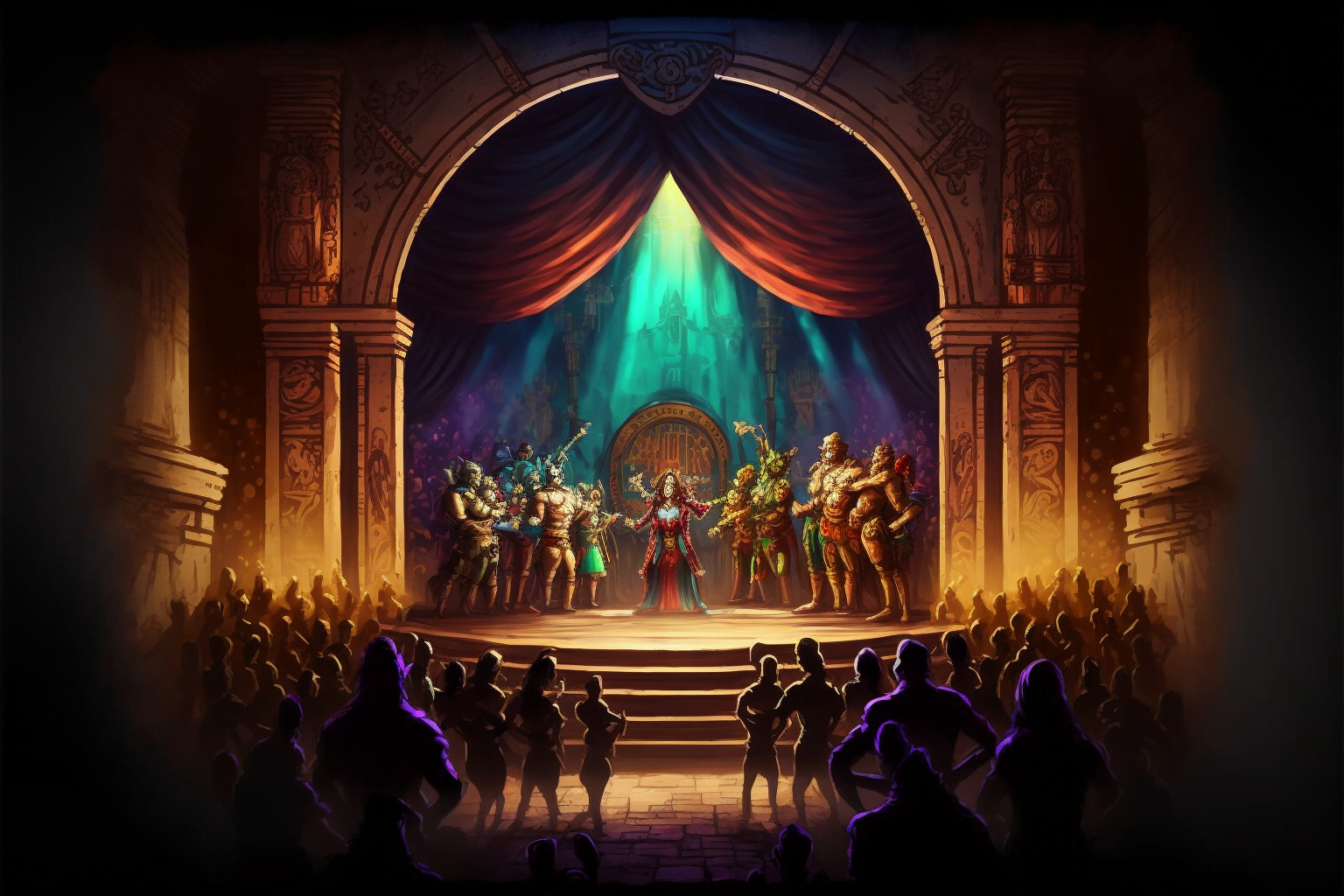Deepmind's "Dramatron" can write film and theater scripts

Key Points
- Dramatron from Deepmind uses a special prompting method to elicit consistent storylines from large language models.
- This allows the system to create entire screenplays and theater scripts.
- Human testers see Dramatron as a useful creative tool.
With "Dramatron", Deepmind introduces a new prompt method for large language models. For the demo, Deepmind uses technology from OpenAI.
With Dramatron, Deepmind aims to overcome a common limitation of current large language models (LLM): The ability to generate long, cohesive stories with consistent characters and an ongoing plot.
Fundamental to Dramatron is the so-called "prompt chaining". The method chains prompts at lower hierarchy levels with prompts including output from higher hierarchy levels.
The team of researchers from Deepmind and Stanford University can use it to create coherent scripts and screenplays for theater and film - from titles to characters, storylines, location descriptions, and dialogue.
Human editors can intervene in the process but, unlike in similar experiments, do not have to, according to the researchers. Dramatron should be able to narrate consistently without human help.
Hierarchical prompting for consistent stories
The starting point for Dramatron is the short summary of a story, the so-called log line. It usually contains the setting, the protagonists and antagonists, a conflict or goal, or a particular event. The summary answers the crucial questions for a plot about who, what, when and where, how, and why.
After a human enters the log line, Dramatron generates a list of characters, the plot, and locations along with their descriptions. All these parameters should be consistent with the log line. Finally, the system generates the dialogs for each scene.
Video: Deepmind
Dramatron uses five hard-coded prompts that generate their respective text based on the log line and build on each other.
- The title prompt generates the title based on the log line.
- The character description prompt generates the character descriptions based on the log line.
- The plot outline prompt generates the plot and compact scene descriptions including location information based on the log line and the character list. It also generates summaries of the statements of involved protagonists.
- The location description prompt generates a detailed scene based on a location name and the log line.
- Finally, the dialogue prompt generates dialogue based on the scene summaries, location and character descriptions, and, for story consistency, the log line. The prompt processes information from the current scene and past scenes.
After each step, a human can intervene in the process, repeat the generation, continue it or edit the output manually.
Video: Deepmind
To develop the system, Deepmind used an in-house Chinchilla model trained with 70 billion parameters. The provided demo connects to GPT-3 and therefore requires an OpenAI API key. Deepmind's commercially oriented sister company, Google, has numerous large language models like PaLM in development, but none of them are available as products yet.
Helpful writing tool, but no substitute for human editors
The team co-creatively generated Dramatron pieces with 15 professionals from the theater and film industries, and then evaluated them with the same people in open interviews.
The reviews were mostly positive: 92 percent of respondents were surprised by the AI output and 84 percent found the system helpful. 77 percent found that working with Dramatron felt collaborative and that they were still part of the creative process. Film professionals tended to rate the scripts generated higher than theater professionals.

Criticisms included sexism occurring in the scripts, the risk of plagiarism, and the impact of the system on the creative industry. One feedback was that Dramatron could free artists from writing formulaic scripts, but that this would destroy job opportunities.
Some participants missed consistency in the stories and a lack of understanding of the world as well as the elements that can be portrayed well on a stage. Others criticized that there was a lack of subtext and nuance, and they felt that the plots and characters were not fully told.
"AI will never write 'Casablanca' or 'A Wonderful Life.' It might be able to write genre-boxed storytelling," one participant said.
Questions about authorship are also at play: more than half of the participants said they felt that they did not own the output of the AI system. However, all participants found Dramatron useful as inspiration in the writing process.
Accordingly, the research team concludes that Dramatron could be used as a "co-creative writing tool" that human authors use to write screenplays and theater scripts alongside LLMs.
Examples of generated scripts can be found in the paper, and a GPT-3-based demo is available here.
AI News Without the Hype – Curated by Humans
As a THE DECODER subscriber, you get ad-free reading, our weekly AI newsletter, the exclusive "AI Radar" Frontier Report 6× per year, access to comments, and our complete archive.
Subscribe now